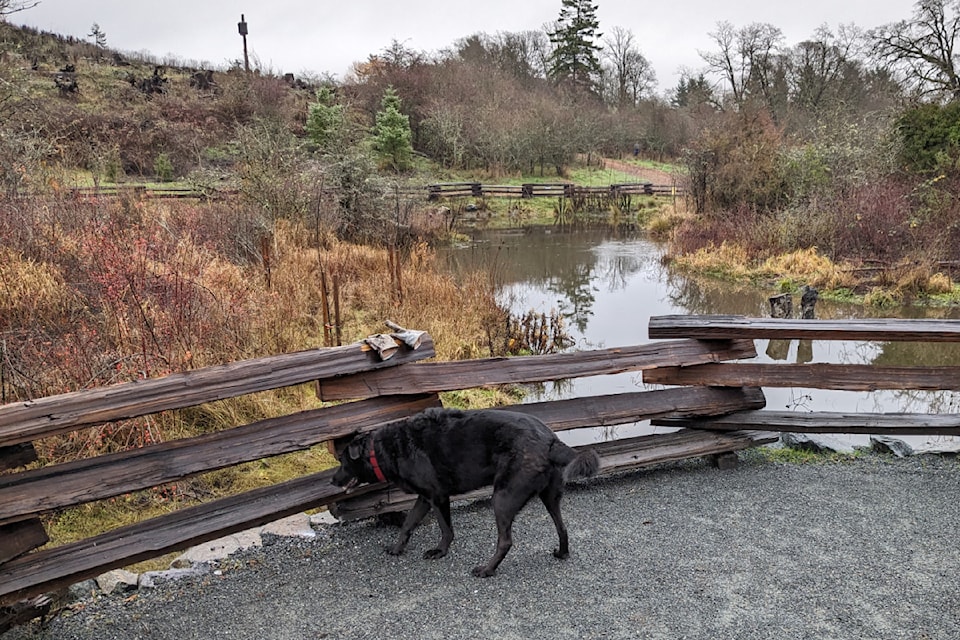With its insane ability to self-seed and spread, the battle against spear grass is one Greater Victoria can’t win, says one area parks manager.
“It’s so out of control that we don’t have the resources to manage it,” Chris Hyde-Lay, Oak Bay parks manager, told the Oak Bay News. That’s true across the region, up Island and in the Okanagan where a variety of spear grass species present danger to both pets and rare plants.
“They often show up in areas where people love to walk with their dogs or disturb sites,” Hyde-Lay said. “People and dogs help with its spread because they walk through this fields when it’s in seed, which is right now.”
Spear grass is a generic term used to describe more than 60 types of the plant that produces sharp spears – some the region struggles with include the native hordeum marinum, commonly called hare barley and invasives bromus rigidus (rip-gut brome) and bromus sterilis (barren brome).
The grasses grow a long, stiff, sometimes-barbed, projection at the top that disperses narrow grass seeds by snagging a moving object. If a snag goes undetected, the seed moves along the hair toward the skin and into the soft tissue.
“Prevention is key,” Hyde-Lay said, suggesting pet owners to do daily checks and brush when they get home from a walk. “I wish that we could more. I hate to say that it’s here to stay, but it’s here to stay.”
Saanich, among the municipalities helping its residents battle the scourge dangerous to dogs, reiterates similar messaging – suggesting dog owners avoid long grass in general in late summer when grass seeds appear ripe.
“Stick to the trails and walk with your pet on a leash. A good rule of thumb is, if you have grass seed in your socks after a walk your dog likely has seed on/in its coat,” a fact sheet recommends. “Check your pet's paws, coat, and eyes regularly from July to October after walks and look for signs of lesions or infection. If you do notice a swelling or cyst-like lump on your pet's body, it is recommended that you consult a veterinarian as soon as possible.”
A second reason to attempt control is because the grasses can spawn 500 seeds from a single plant and overtake fields where rare plants struggle to survive.
Saanich attempts to control invasive bromus in Garry oak restoration sites, maintaining designated trails as well as regular mowing and trimming schedules. Oak Bay makes similar moves to take seed heads off before maturation.
Without overwhelming resources, it’s impossible to stay on top of. However, dedicated volunteer groups can make a difference, Hyde-Lay said. A consistent, persistent, long-running group of volunteers in Oak Bay’s park Anderson Hill Park has made a dent.
“The resources needed would be substantial to get any semblance of control,” he said.



